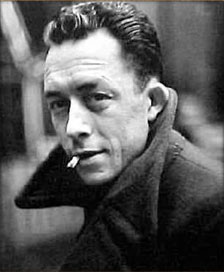A painter’s style lies in this blending of nature and history, in this stability imposed on incessant change. Art realizes, without apparent effort, the reconciliation of the unique with the universal of which Hegel dreamed. Perhaps that is why periods, such as ours, which are bent on unity to the point of madness, turn to primitive arts, in which styliza-tion is the most intense and unity the most provocative.
The most extreme stylization is always found at the beginning and end of artistic movements; it demonstrates the intensity of negation and transposition which has given modern painting its disorderly impetus toward interpreting unity and existence. Van Gogh’s admirable complaint is the arrogant and desperate cry of all artists. “I can very well, in life and in painting, too, do without God. But I cannot, suffering as I do, do without something that is greater than I am, that is my life the power to create.”
But the artist’s rebellion against reality, which is automatically suspect to the totalitarian revolution, contains the same affirmation as the spontaneous rebellion of the oppressed. The revolutionary spirit, born of total negation, instinctively felt that, as well as refusal, there was also consent to be found in art; that there was a risk of contemplation counterbalancing action, beauty, and injustice, and that in certain cases beauty itself was a form of injustice from which there was no appeal. Equally well, no form of art can survive on total denial alone. Just as all thought, and primarily that of non-signification, signifies something, so there is no art that has no signification.
Man can allow himself to denounce the total injustice of the world and then demand a total justice that he alone will create. But he cannot affirm the total hideousness of the world. To create beauty, he must simultaneously reject reality and exalt certain of its aspects. Art disputes reality, but does not hide from it.
Nietzsche could deny any form of transcendence, whether moral or divine, by saying that transcendence drove one to slander this world and this life. But perhaps there is a living transcendence, of which beauty carries the promise, which can make this mortal and limited world preferable to and more appealing than any other.
Art thus leads us back to the origins of rebellion, to the extent that it tries to give its form to an elusive value which the future perpetually promises, but of which the artist has a presentiment and wishes to snatch from the grasp of history. We shall understand this better in considering the art form whose precise aim is to become part of the process of evolution in order to give it the style that it lacks; in other words, the novel.
The end
